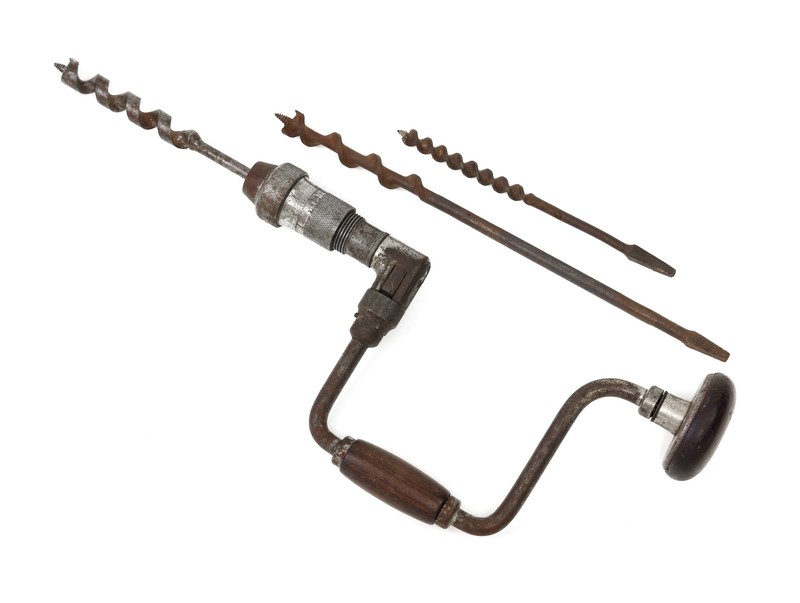In today's society, without power there is no society. Nearly every action of every job cannot be done without electricity, meaning that when the grid goes down, many of us just stand around not knowing what to do with ourselves until the power comes back on. What if it never does?
Check out the list below to start adding these tools to your inventory and keep on working, no matter what.
- Hand-powered Air Pump: In case you didn’t know it, you can use a bicycle air pump to inflate a car tire. It will take you a long time, but nothing is preventing it except maybe the wrong valve connector-which is an easy fix. No matter how many hours of pumping it takes, a bike pump will get the job done.
- Battery-free Circuit Tester: How do you know there is no electricity? As one of the cheapest tools on this list, it is also one that could save your life. Since the indicator light won’t kick in until the volts approach three figures, its not going to work for car batteries. But that’s what a screwdriver is for right? You know, shorting the battery to check for a spark
- Battery-free Battery Tester: A battery tester that does not itself use a battery won’t give as reliable a reading as a powered tester, but still it is a helpful reading for most situations. The powered versions can test the battery under load, but most folks use a tester to give the thumbs up or down to any given battery.
- Cross-cut saw: This country was built with cross-cut saws, and while not as efficient as their internal combustion descendants, a pair of muscles and a sharp cross-cut will make short order of any tree outside our national parks.
- Hacksaw: Useful hand hacksaws come in two classic sizes, 10 inch blades and 12 inch. The standard looking solid-frame hacksaw uses a 12 inch blade while the mini saw uses the 10 inch.
- Standard Hand Saw: This is the traditional looking saw with a wood handle attached to a slightly triangular blade tapering as it goes from grip to tip.
As the teeth get smaller, it is easier to cut because less material is removed with each stroke. So the there is a tradeoff between cutting speed and necessary muscle. If you are in a region with harder woods, go for a tooth count above 10. If your world is more of softer woods like the pine forests of the west, then fewer than 10 teeth per inch will serve most needs just fine.- Hand-powered Grinding Wheel: From plow blades to hatchet heads, nothing makes sharpening large metal easier than moving the stone instead of the blade. Even at just a few hundred RPMs, the spinning stone will spit enough sparks to set your shop on fire if you’re not careful.
- Scythe: Long after the lawn mower engine has seized and the push mower’s blades are too dull and chipped to cut anything, the scythe will keep going since using only the tools listed above, you could easily build yourself a new scythe from little more than a solid branch and a leaf spring.
- Small Hand Drill: Most household drilling jobs will settle for a hole one-quarter inch in diameter or less which just so happens to be the capacity of smaller hand drills. It is very easy to snap off small drill bits when using a larger drill so small hand drills are essential if your drilling needs require holes pin to pencil-sized. Small hand drills do not generate as much torque as the larger versions, so both small and larger hand drills are necessary since one size won’t drill all.
- Large Hand Drill: Larger hand drills come in two popular designs. One looks like a bigger version of the standard small hand drill which is little more than a vertical shaft with a geared-crank wheel attached to the center, a handle above it, and a chuck below it. The other design called a brace drill looks like a bowed shaft of metal with a chuck on one end, a spin-able knob on the other and a rotating grip in the middle. Either design will allow you to place a considerable portion of your body weight on the shaft while drilling, but the cost of the more complex geared version increases exponentially as it goes up in size.
While most people certainly stock up on axes, knives and saws, the reality is that those tools will only allow you to do a small portion of all the jobs that will be required of you. Take stock of everything you use in your shop or your tool shed and you'll quickly start to realize just how much you take electricity for granted. Sure, it makes our lives a lot easier, but you should be sure to have a non-powered version of every tool, just in case.
This is a fantastic list that very few people take stock of. If you'd like to see the original article, check out Survival Cache.

If you can sharpen a scythe you can sharpen a push mower
I need one! I remember my dad had one.